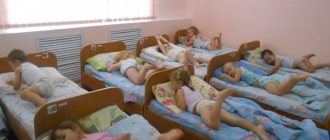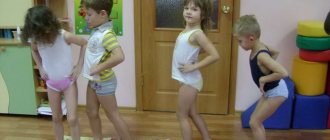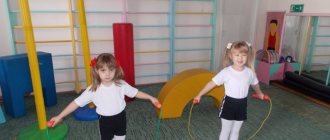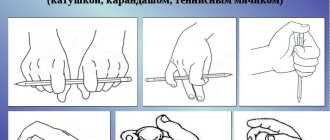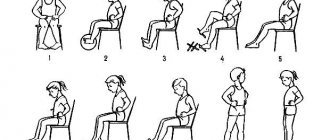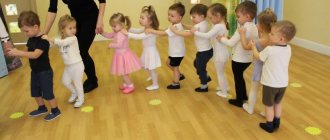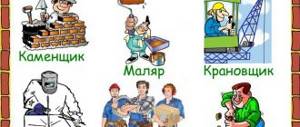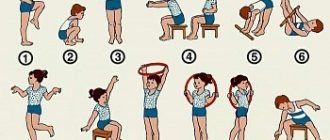Definition of the concept of “gymnastics after sleep”
Gymnastics after a nap is a set of exercises that organizes a leisurely transition from the calmness of sleep to continued activity, which is carried out to the accompaniment of rhymes and slow, quiet music. For children of the second youngest group, that is, 3–4 years old, the complex should be in the nature of a game with a plot, where a familiar character acts, who is a model for repeating all actions after him.
Physical activity is distributed in such a way that the complex includes exercises:
- to perform while lying in bed (stretching, swinging legs and arms);
- active block (running, squats, as well as elements of gymnastics for fingers, etc.);
- for the development and improvement of the respiratory system.
The total time to complete the exercises is 5–7 minutes.
It is worth noting that the selection also depends on the overall strategy of the educational program of the preschool institution. So, if hardening groups are practiced in kindergarten, then children do most of the exercises outdoors at any time of the year.
How the baby wakes up determines his mood and physical condition for the rest of the day.
Goals of exercise after sleep
Like all program elements of working with children in kindergarten, the main goal of conducting classes is to preserve and strengthen health. In this context, the goals of post-sleep exercise are:
- tone muscles;
- improve mood;
- prevent curvature of the spine, development of flat feet;
- instill in children the habit of stretching after sleep.
It is important to note that during exercises after sleep there should be no sudden body movements, otherwise muscle strain, increased excitability and dizziness cannot be avoided. In the second younger group, the emphasis is on walking on toes barefoot, as well as lifting.
The purpose of gymnastics after sleep in the 1st junior group of kindergarten
The purpose of gymnastics is to invigorate children.
Children wake up in kindergarten
For this, a complex of quiet slow music, poetic lines and movements is used. Techniques include:
- stretching;
- alternating slow swings of arms and legs;
- warming up fingers;
- respiratory exercise.
This is all aimed at invigorating the body after sleep. Slow movements in such exercises eliminate muscle strain, hyperactivity and possible headaches.
Note! This program according to the Federal State Educational Standard includes all the necessary physical activity, hardening and water procedures.
These exercises are aimed at strengthening immunity, health, and increasing muscle tone. Fun techniques help keep kids in a positive emotional mood throughout the day. Exercise helps prevent musculoskeletal disorders. The program is aimed at developing in children the healthy habit of warming up after sleep.
Important! The duration of the warm-up is on average 10-15 minutes. Exercises after lunchtime nap take into account the nature of activities before children fall asleep. They are less intense than morning classes. To interest children, this program must be carried out in a playful way.
Summer time is especially loved by children, so games and exercises are recommended to be done outdoors in the kindergarten yard. After wild games in the morning in the summer, children quickly want to sleep. At this time, educators need to closely monitor their charges.
Warm up in bed
Physical exercise after waking up is divided into four stages:
- Exercises are done in bed. Children stretch, stretch their arms and legs. Gymnastics are performed slowly for 3-4 minutes.
- The second stage takes from 5 to 8 minutes - warm-up walking and playing using various sports equipment. At this stage there are individual classes to correct disorders of the musculoskeletal system.
- The third stage involves performing breathing exercises. The time required increases to 5 minutes if children have already been performing this exercise for several months.
- Individual lessons on hardening children.
When to enroll your child in the swimming section - when to sign up?
Note! Such classes are designed for a 7-day set of exercises.
Rules
- When choosing a set of exercises, you should take into account those activities that occurred before sleep. So, if before lunch there was a role-playing game, then gymnastics may include more intense physical activity.
- The temperature in the bedroom should not be lower than 16–18 degrees.
- For babies who wake up earlier, it is worth preparing several exercises for self-massage, for example, with massage balls.
- Uniform: shorts and T-shirt. Typically, shoes are not required to perform the exercises. The only exceptions are dance elements that require Czech shoes or socks.
- Children cannot be forced to do gymnastics. All babies are different, which means that each one has their own characteristics of awakening. So you just need to find out the reasons for the refusal, but without insisting.
If a child does not want to do an exercise in a group, you should not punish or force, but find out the reason
- If the group is in quarantine, then the load should be reduced in accordance with the doctor’s recommendations. Usually, during the peak incidence of ARVI, barefoot walking is abolished.
- In summer, a block of exercises involving running, squats, etc. is recommended to be done outside.
In order for children to maintain a positive emotional attitude, you need to adhere to time limits.
- Exercises in bed - 1.5–2 minutes.
- Active block loads and breathing exercises - 2-3 minutes.
- Hardening procedures, if any - 3 minutes.
Card file of awakening gymnastics
As already noted, you can achieve the goals determined by invigorating gymnastics by alternating with a combination of different types of gymnastics (usually after half a month). For the second younger group, it is rational to use a combination of two or three types, since in this case it is easier to create a single plot for the entire set - that is, to satisfy the main requirement for carrying out such health-improving work: putting physical activity in the form of a game. Combinations of exercises are compiled in accordance with the planning of work with children of a particular group.
Exercises in bed and music-rhythm block
The most common type of combinations: gymnastics, poetry and music. Let us give an example of several complexes of such gymnastics.
- Exercise "Stretching". Lying on your back, stretch your arms along your body.
- We inhale and at the same time stretch our arms up and our heels forward.
- We return to the starting position and exhale.
- Lying on your back, spread your arms to the sides.
- Lying on your back, bend your knees.
- We play the harmonica and clap our hands loudly. (Children clap).
- Legs up! Top, top! (Children stomp).
Instructions for general developmental exercises and self-massage:
- We lie down on our backs.
- We turn our heads to the right, to the left.
- We stroke the arms, tummy, legs, heels.
- We bend our legs, clasp our knees with our hands and gradually straighten our legs.
This is interesting. Combinations of different types have one feature: the first in these sets will be exercises in bed.
Poem for exercise in bed with elements of gymnastics for the respiratory system.
- A bird sat on the window, a cat meowed in the yard - they decided to wake us up. All! Quiet hour is over!
- Wake up, children, I want to invite you to play hide and seek. (Children lie down on top of blankets. Calm music plays. Children perform movements according to the text).
- Our sleepy palms Woke up little by little, Played hide and seek merrily - Fingers clenched into fists.
- The little toes on our feet know all the paths in the park. They check where the heels are, And play hide and seek with us.
- We almost woke up, our hands stretched out, waved over the sheet, and hid behind the back together.
- We will clasp our hands together in a “lock” above our heads. We will bring our right and left elbows together in front of us. Their knees don’t want to sleep, It’s high time they got up.
- We stuck out our knees and quickly straightened our legs. Our mouths are silent, We train our tongue: We will hide it and show it. "Good afternoon!" - we will say it loudly.
- Let's breathe deeply and blow out the air noisily. Our noses woke up, We smiled at each other! (stand on the mats next to the crib).
Instructions for the exercise “Grow Big”:
- We stand on the mats, lower our arms along the body.
- We place our feet at shoulder level.
Walking on massage mats is very useful for preventing flat feet
- As you inhale, raise your arms up, bend and rise onto your toes.
- We lower our hands, stand completely on the foot and exhale with the sound “u-h-h-h”.
- Repeat 4-5 times.
Gymnastics file in junior group 1
The card index of waking up gymnastics varies by month and is carried out all year round. The schedule focuses on a variety of exercises depending on the month of the year.
Note! The child first finds himself in a large environment of other children. This means that various diseases are inevitable. The degree of load and complexity of the tasks is discussed with the doctor. For children with disabilities and pathological disorders, an individual program is prescribed.
September
There are two types of classes. “We Woke Up” involves stretching, clapping and spinning a bicycle. “Kolobok” - warm-up in bed using self-massage and walking in place. “Visiting the Sun” is aimed at relieving emotional stress and establishing a positive attitude.
October
At this time, the “Waking up Kittens” technique to the sounds of the lullaby song “Little Gray Kitty” is relevant. Children perform movements according to the text of the song. While listening to music, they imitate cat movements: they wash their paws, shake their hands, wash themselves and stroke their belly.
November
The “Fun Zoo” exercise is aimed at corrective and breathing exercises. It involves children imitating different animals. During “Hide and Seek,” kids do breathing exercises while imitating animals according to the lyrics of the song. After the music ends, the children get up and go to perform hardening procedures.
Tempering exercise
December
Exercise “Chantelle” with elements of breathing exercises. Gymnastics “Clock” involves crossing and lowering your arms and legs in different directions. During a slow run, children swing their arms in different directions, periodically switching to a slow step. With every small step they clap their hands on their sides.
January
This month we are using the “Favorite Toys” technique, which is divided into five small exercises. “Doll” - lying on your back to the beat of music, you need to turn your head and arms, showing the other children your toy.
Note! “Wind-up machine” - children alternately rotate their arms and legs, the pace gradually accelerates and then slows down.
When it comes to playing kolobok, children sit down and press their legs to their chest. The hands are behind and rest on the bed; in the second movement they hug their legs. The exercise is done slowly and repeated 5-6 times. During “Funny Monkey,” babies roll over from their stomach to their back and back. “Let’s inflate a balloon” - students take a noisy breath with their noses and after a couple of seconds exhale through their mouths.
There is another type of waking up gymnastics - “Spider Bugs”. During exercises, the teacher tells the students which part of the body is awake, and they must show: rub their eyes, shake their hands, etc.
Forms of organization of physical education
Note! The exercise is performed in a supine position.
February
The “Bear” warm-up begins in bed with turning your head, bending and straightening your arms, and lightly stroking your body. Afterwards, the children stand up, squat and jump. During the “Pump” exercise, the arms are flexed and extended at the elbows, and the legs are bent towards the chest.
March
“Cockerel” is a breathing exercise in which you need to repeat words and do exercises based on the text. During the “Stretch” warm-up, the arms are extended and clapping. Then the legs are stretched. “Bicycle” gymnastics is performed for 15 seconds.
Performing breathing exercises with toys
April
This month the “Kolobok” warm-up is relevant. Lying on their backs, children turn their torso left and right, after which they alternately raise their legs up. When this warm-up ends, the kids stretch their bodies up, like cats. Another exercise is called “Winding Threads” - students make circular movements with their hands, as if winding threads. Then they bend down and slap their hands on their knees. After 5-7 repetitions, children lie on their backs and do a “bicycle.”
May
Gymnastics “Apple” is carried out after the initial warm-up. Children repeat the movements according to the lyrics of the song. And the last class in May is “Hippos”. During this exercise, children, lying on the bed, alternately straighten their arms, roll over from their back to their stomach and back. Afterwards, lying on your back, actively move your arms and legs, then stand up and repeat the warm-up while standing.
Summary of gymnastics in the second junior group, author Ershova Irina
Typically, educators use complexes that have a plot basis:
- Educator: “Children, it was interesting to watch you while you were sleeping. Some were snoring like a little kitten, some were stretching in their sleep like a little fox, some were buried in the pillow like a little bear cub. Let’s now use our exercises to depict some animals.”
- Gymnastics complex. "The animals have woken up." I. p. - lying on your back, arms along the body. Yawn and stretch well. Repeat several times; the pace is slow.
- Educator. Guess the riddle: An angry, hungry man walks in the forest in the cold winter. He clicks his teeth! This is gray... (wolf)
- "Welcome to the wolf cubs." I. p. - lying on your back, arms along the body. Bring your hands to your chest, then stretch them forward. Return to i. p. Repeat five times; the pace is moderate.
- "Owl". I. p. - lying on your back, one hand on your stomach, the other on your chest. Drawing in your stomach - inhale, sticking out your stomach - exhale. As you exhale, say “f-f-f-f” loudly. Repeat four times; the pace is slow.
- "Nimble Monkeys" I. p. - lying on your back, arms along the body. At the teacher’s command “tummy”, turn onto your stomach. On the command “back”, turn onto your back. Repeat five times: first moderately, then quickly.
- "Bear cubs growling." Inhale through your nose. As you exhale, pull out “mm-mm-mm-mm,” while simultaneously tapping the wings of your nose with the fingers of both hands.
